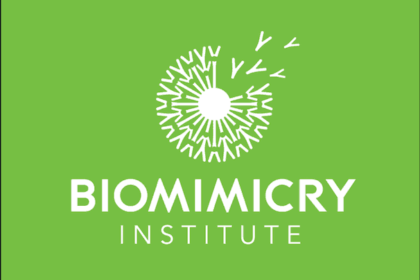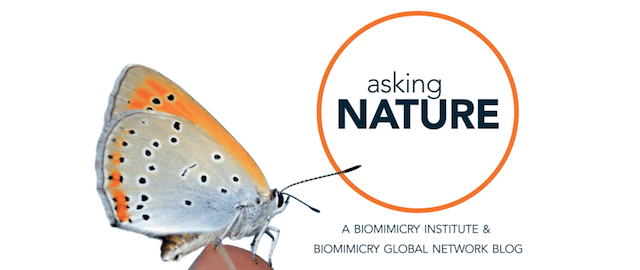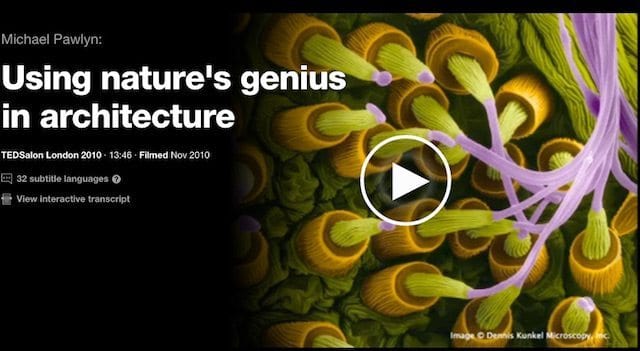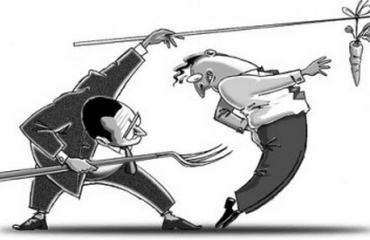The Science of Biomimicry

The Science of Biomimicry:
How to Use Nature’s Teachings to Thrive
The science of Biomimicry recognizes that we have strayed too far from the wildlife that we’ve coevolved with and asks for a return to the source. Those who practice it observe what other life forms have done to survive and then apply the underlying principles to solve human scenarios. The thought is that nature has been improving its foundation for the last 3.8 billion years and we should take some design cues from it. The science is backed by a philosophy of learning from nature instead of taking from it, engaging with nature instead of separating ourselves from it.
Janine M. Benyus is the catalyst behind the Biomimicry movement. Though there were innovative practitioners before she coined the term, Benyus articulated what was going on and championed its progression. Her 1997 book “Biomimicry; Innovation Inspired by Nature” explains the tenets of Biomimicry and provides real life examples. Since that book, Benyus with a team of scientists have started the website AskNature, a compendium of companies and products using biology as muses, as well as facts about specific species to spur future innovations. This basis for innovation has caught the attention of the USGBC and in 2016 Benyus became one of the USGBC’s directors, her term being the next three years.
AskNature is a bastion for innovation. Click the moth to see if any sparks fly: 
Prime examples of how people/companies are turning to Biomimicry to heal the planet and ourselves are: The Sea Water Green House, Sharklet Technologies, & Columbia Forest Products’ Purebond.
Biomimcry and Sea Water Greenhouse
The Sea Water Greenhouse uses Biomimicry to reverse desertification. It is the basis for the Sahara Forest Project, which not only grows crops in the desert but also generates energy through CSP solar panels. Architect of the Sahara Forest Project, Michael Pawlyn, explains that during the age of Julius Caesar the Sahara Desert was covered with cypress and cedar trees. Colonization of the land led to desertification. However, the Sea Water Greenhouse and the Sahara Forest Project demonstrate that life can be regenerated even in barren landscapes.
The Sea Water Green House is a passive technology that allows plants to grow in arid/dry climates. The design is based on the Namibian Beetle’s ability to hydrate itself by condensing and collecting moisture from the air. Its black shell attracts moisture and its hydrophobic and hydrophilic texture keeps it there. After enough condensation has accrued the beetle tips the water into its mouth by flipping up the sides of its back.
Similarly, the Sea Water Green House is made of evaporative grills which bring cool air and condensation to the plants inside. In the case of the green house, moisture begets moisture. As the plants grow they emit their own moisture through evapotranspiration. Eventually this combined amount of condensation hits a tipping point whereby the greenhouse not only provides water for the plants inside, but creates an excess amount of it. The surplus is used to hydrate the surrounding area. In a year’s time it was covered with greenery.
This close looped system works within the confines of the environment and the interconnected nature of ecosystems. Instead of importing tons of water to a desert that would normally never have it, the Sea Water Green House utilizes the moisture that is already there. The system sustains itself and in so doing conserves one of our most valued resources. Imagine how much water California could save if it applied the tenets of the Sea Water Greenhouse to the grassy lawns and golf courses of LA and Palm Springs?
To listen to Pawlyn’s cool TED talk on Biomimicry click here or on the image below; to visit the Sahara Forest Project click here.
What are Sharklet Technologies?
As the name implies, Sharklet takes its inspiration from sharks. Sharks avoid infection from bacteria by virtue of the infinitesimally small bumps on their skin. Bacteria simply can’t stick to it. In an effort to reduce hospital acquired illnesses (of which 20-40% come from surfaces), Sharklet technologies looked to the microtopography of shark skin to develop an adhesive film that would prevent bio-adhesion. Sharklet’s micro-pattern was successful. The Journal of Microbiology and Experimentation stated that Sharklet reduced bacterial transmission on surfaces by a factor of 5.4 as compared to unpatterned film. In 2014 Sharklet was named as a biotech company to watch by the state of Colorado. PBS News Hour highlighted Sharklet as a technology that can be effective in helping prevent the proliferation of super bugs.
As opposed to toxic antimicrobial agents which target a range of specific bacteria but often don’t work, Sharklet simplifies the problem by addressing how organic matter attaches itself. Surfaces cannot be contaminated if the contaminants cannot stick to them. Sharklet uses no additives, chemicals, antimicrobials, or antibiotics. Similar to shark skin, it is the pattern alone that achieves the goal.
Columbia Forest Products: PureBond
Columbia Forest Products’ PureBond is a formaldehyde free FSC certified plywood whose binding agent is based on the marine adhesive proteins of the blue mussel. Professor Li and his team at Oregon State University observed that mussels produce a protein that allows them to stick to underwater surfaces. Transferring this idea to soy protein, Dr. Li modified the plant’s amino acids to resemble that of the blue mussel. The result was an adhesive that contained zero vocs (except for vocs naturally found in wood), has no added urea-formaldehyde (wood naturally contains formaldehyde), and according to the EPA was superior to urea-formaldehyde resin in “strength and water resistance.” In 2007 the EPA awarded Columbia Forest Products the “Greener Synthetic Pathways Award” for reducing hazardous air pollutants, and reducing more than 47 million pounds of toxic urea formaldehyde resin in just one year.
Conclusion
Why should we be limited to what our own minds can conjure up when we have the rest of the planet? If we apply technologies of the natural environment to the built environment we can mimic a system that is closed loop, synergistic, non toxic, and resource abundant, a pretty good goal. Perhaps if we achieve this, the line between the natural and the built will be forever blurred- but I will save this philosophical debate for another day.
Katie Bachner provides Green Building & Healthy Material and Biomimicry consulting for HBS. To learn more about how this service can help your next project click here



